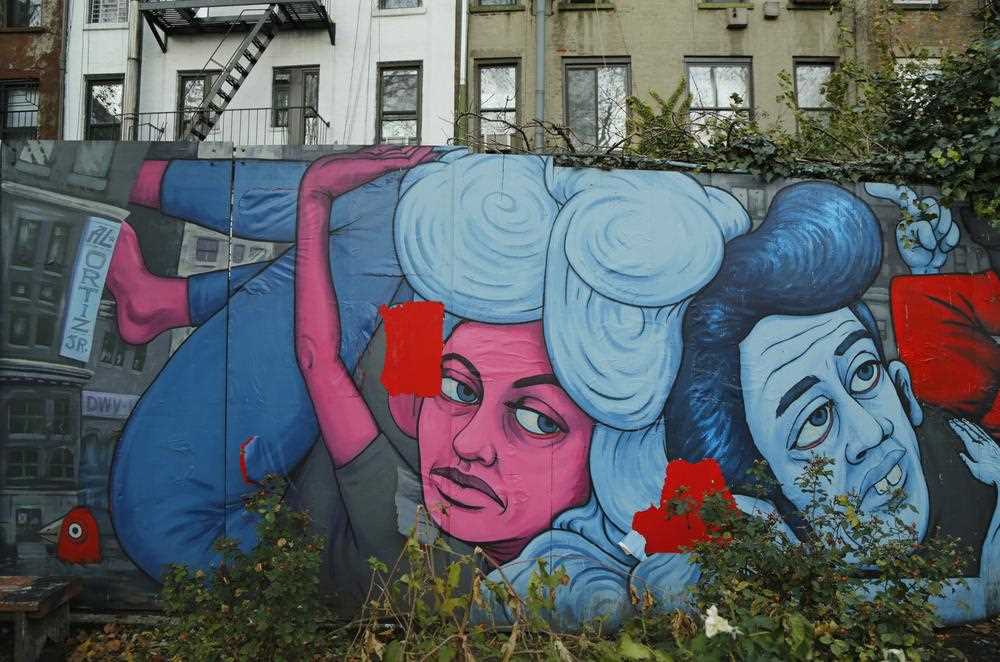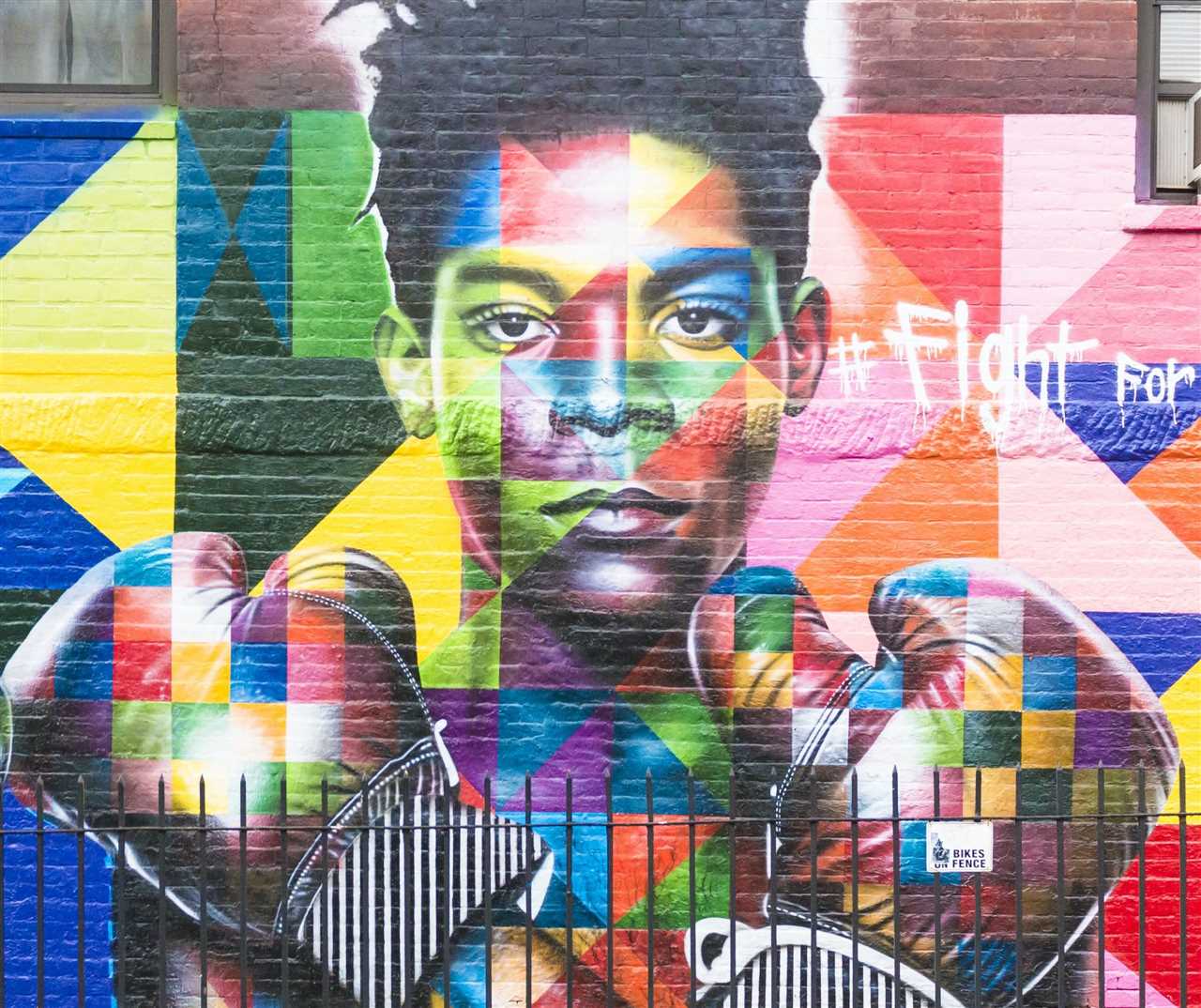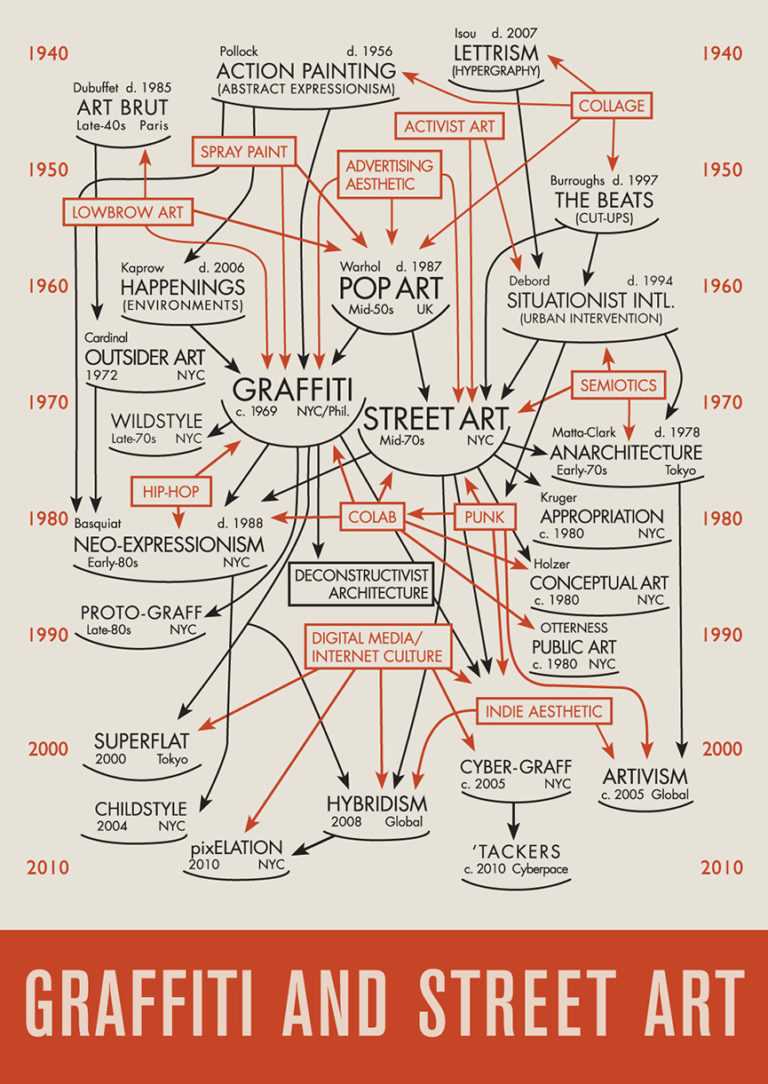Street art has become a powerful form of expression, transforming the world’s urban landscapes into vibrant canvases. From spray-painted murals to stenciled graffiti, these works of art challenge conventional ideas of creativity and bring art to the masses. But where did street art originate?
While the origins of street art can be traced back to ancient times, its modern incarnation can be attributed to the graffiti subculture that emerged in the 1960s and 70s in cities like New York and Philadelphia. Influenced by hip-hop culture and political activism, early street artists used the city streets as their gallery, using spray paint to leave their mark on the walls of buildings.
The rise of street art was a response to the dominant art scene of the time, which was seen as elitist and exclusive. Street artists sought to democratize art, making it accessible to everyone, regardless of their socioeconomic status. By taking their art to the streets, they bypassed traditional institutions and embraced a new kind of artistic freedom.
However, street art has not always been celebrated. In its early days, it was often viewed as vandalism and was subject to strong backlash from authorities. Over time, however, street art has gained recognition as a legitimate art form, with museums and galleries showcasing the works of renowned street artists. Today, street art continues to evolve and push boundaries, challenging perceptions and sparking important conversations about art, politics, and urban spaces.

Graffiti has long been regarded as an art form that allows individuals to express themselves and communicate their thoughts and emotions in a public space. It is a unique and powerful form of self-expression that challenges traditional notions of art.
Through graffiti, artists are able to make a statement and share their messages with a wider audience. Whether it’s a political statement, social commentary, or a personal reflection, graffiti allows artists to convey their ideas and perspectives in a way that is accessible to everyone.
One of the defining characteristics of graffiti as a form of expression is its ability to create a dialogue between the artist and the viewer. Unlike other art forms that are often confined to galleries and museums, graffiti is a form of art that can be found in the streets and public spaces, making it accessible to people from all walks of life.
Graffiti is also a form of expression that is inherently rebellious and subversive. It challenges the notion of private property and the traditional boundaries placed on art. By taking their art to the streets, graffiti artists are able to break free from the constraints of the art world and reach a wider audience.
Furthermore, graffiti allows artists to leave their mark on the world, both literally and metaphorically. It is a form of expression that is often associated with youth culture and the desire for individuality and self-expression. Through graffiti, artists can leave a lasting impression on their communities and leave behind a visual representation of their thoughts and ideas.
Emergence of Murals in Urban Culture

Murals have become an integral part of urban culture in recent years. These large-scale artworks are typically painted or applied directly onto buildings, walls, or other structures in public spaces. They often depict a wide range of subjects, from local history and cultural heritage to social and political commentary.
The emergence of murals in urban culture can be traced back to the early 20th century when artists began using walls as canvases to express themselves outside the traditional confines of galleries and museums. The mural movement gained momentum in the 1960s and 1970s as a form of visual protest against social and political injustices.
Community Engagement and Beautification

Murals have played a significant role in community engagement and beautification efforts. By transforming blank walls into colorful and vibrant works of art, they not only beautify the urban landscape but also create a sense of pride and ownership among residents. Murals often reflect the unique character and identity of a neighborhood or city, conveying a sense of place and belonging.
In many cases, the creation of murals involves collaboration between artists and community members. This collaborative approach not only fosters a sense of community involvement but also serves as a platform for dialogue and storytelling. Murals have the power to spark conversations, provoke thought, and raise awareness about important social issues within a community.
Breaking Down Barriers

Murals have the ability to break down barriers and make art accessible to everyone. Unlike traditional art forms that may be confined to galleries or museums, murals are visible to all, regardless of socioeconomic background or artistic knowledge. They bring art to the streets, making it a part of everyday life.
Furthermore, murals have the potential to revitalize neglected or forgotten spaces, breathing new life into urban areas. They can transform rundown neighborhoods into vibrant cultural hubs, attracting tourists and injecting creativity into the local economy.
Consequently, the emergence of murals in urban culture has redefined the way we perceive and experience art. With their ability to engage communities, beautify cities, and break down barriers, murals continue to shape and enrich urban landscapes around the world.
Street Art vs. Traditional Art

Street art and traditional art are two distinct forms of artistic expression with their own unique characteristics and contexts. While traditional art has a long and established history, street art has emerged as a rebellious and contemporary form of expression.
Traditional art typically refers to art forms that have been practiced and recognized within the confines of established art institutions such as museums and galleries. It encompasses various mediums including painting, sculpture, drawing, and photography. Traditional art often follows predefined standards and techniques, and is typically created in a controlled environment.
In contrast, street art is characterized by its unconventional and often illegal nature. Street artists create their works in public spaces, using the urban landscape as their canvas. Street art incorporates a wide range of mediums including graffiti, stencil art, murals, and installations. It often addresses social, political, and cultural issues and is intended to provoke thought and spark conversations.
Another key difference between street art and traditional art lies in their audiences. Traditional art is often created with the intention of being displayed and appreciated by a specific audience, such as art enthusiasts or collectors. Street art, on the other hand, is accessible to a much broader audience, as it is often created in public spaces and can be encountered by anyone passing by.
Street art and traditional art also differ in terms of their permanence. Traditional art pieces are typically created to withstand the test of time, using materials and techniques that ensure their longevity. Street art, on the other hand, is often subjected to the elements and may be intentionally removed or covered up by authorities or other artists.
Despite these differences, street art and traditional art share common ground in their ability to evoke emotions, convey messages, and challenge established norms. Both forms of art have the power to inspire and engage with audiences, albeit in different ways. As street art gains recognition and acceptance in the art world, the boundaries between street art and traditional art continue to blur, leading to new and exciting possibilities for artistic expression.
Influences of Culture on Street Art

Street art is an art form that is deeply influenced by culture. It reflects the society, values, and traditions of the people who create it. In fact, culture plays a crucial role in shaping the themes, techniques, and messages that street artists depict in their works.
Cultural Diversity

One of the key influences of culture on street art is cultural diversity. Artists from different backgrounds and ethnicities bring their unique perspectives and experiences to the streets, resulting in a vibrant mix of styles and themes. Whether it’s the colorful murals celebrating indigenous cultures or the political messages addressing social issues, street art reflects the rich diversity of our global society.
Urban Culture

Street art is heavily influenced by urban culture. From the graffiti on subway trains in New York City to the stencil art adorning the walls of London, street art is deeply rooted in the energy and creativity of city life. The unique visual language of street art, with its bold colors, dynamic compositions, and graffiti-inspired tags, is a reflection of the urban environment and the subcultures that thrive within it.
| Culture | Artistic Styles |
|---|---|
| Hip-hop culture | Graffiti, stencils |
| Punk culture | Street posters, stickers |
| Indigenous cultures | Murals, traditional symbolism |
As can be seen in the table above, different cultural influences give rise to a variety of artistic styles and techniques in street art. The fusion of cultures in urban environments often leads to the creation of unique and hybrid art forms, pushing the boundaries of expression and creativity.
Evolution of Street Art Techniques

Street art has evolved significantly since its early days as simple graffiti tags on walls. Over the years, street artists have developed new and innovative techniques to create stunning artworks that captivate and inspire viewers.
One technique that has become increasingly popular is stencil art. Using stencils allows artists to quickly reproduce their work in multiple locations, creating a powerful visual impact across large areas. Stencil art also enables artists to add intricate details and layering, resulting in dynamic and visually complex compositions.
Another technique that has gained popularity is wheatpasting. Wheatpasting involves the use of a mix of flour and water to create a glue-like substance, which is then used to adhere paper or printed images onto walls or other surfaces. This technique is often used to make political or social statements, as artists can easily create large-scale posters and paste them up in highly visible locations.
In recent years, 3D street art has emerged as a captivating and interactive form of street art. Artists use optical illusions and perspective techniques to create realistic and immersive artworks that appear three-dimensional when viewed from a certain angle. This type of street art often incorporates the surrounding environment into the artwork, blurring the line between the physical space and the artistic creation.
The evolution of technology has also played a role in shaping street art techniques. Digital graffiti, for example, allows artists to create and project digital artwork onto public spaces, blending the virtual and physical worlds. These digital creations can be dynamic and interactive, changing and evolving in response to various inputs or interactions from viewers.
As street art continues to evolve, artists will undoubtedly continue to push the boundaries of traditional techniques and experiment with new forms of expression. From the early days of simple tags to the complex and dynamic artworks of today, street art remains a powerful and vibrant form of artistic expression that continues to captivate audiences worldwide.
Notable Street Artists and their Contributions

| Artist | Contribution |
|---|---|
| Banksy | Banksy is a mysterious street artist known for his politically charged and often controversial artwork. His distinctive stencil-based style has appeared on walls across the globe, addressing social and political issues with dark humor and clever symbolism. |
| Shepard Fairey | Shepard Fairey gained worldwide recognition for his iconic “Hope” poster design during Barack Obama’s 2008 presidential campaign. His street art often features bold graphics and political messages, challenging viewers to question societal norms and authority. |
| JR | JR is a French street artist and photographer who showcases his work in large-scale, black-and-white installations. Through his “Inside Out Project,” JR pastes enormous portraits of ordinary people on urban surfaces, giving a voice to marginalized communities and promoting social change. |
| Retna | Retna is a graffiti artist known for his distinctive calligraphic style influenced by Egyptian hieroglyphics and Native American art. His intricate lettering and symbolic imagery can be found across urban landscapes, merging various cultures and traditions in his artwork. |
| Swoon | Swoon is a female street artist recognized for her intricate and delicate wheatpaste installations. Her work often focuses on themes of community, empathy, and human connection, featuring portraits of individuals affected by social issues such as homelessness and poverty. |
These are just a few examples of the many talented street artists who have made significant contributions to the art world. Their work challenges traditional boundaries and brings art to unexpected places, fostering creativity, provoking discussions, and inspiring future generations of artists.
Criticism and Controversies Surrounding Street Art

Despite its growing popularity and recognition, street art is not without its fair share of criticism and controversies. One of the most common criticisms leveled against street art is that it is illegal. Many street artists create their work on public or private property without obtaining permission, which can lead to charges of vandalism and destruction of property. However, some argue that street art should be seen as a form of self-expression and an important vehicle for social and political commentary.
Another criticism of street art is that it often lacks artistic merit and is simply considered graffiti. Detractors argue that street art is nothing more than vandalism that defaces public spaces and contributes to urban decay. However, proponents of street art believe that it is a legitimate art form that can transform neglected and forgotten spaces into vibrant and meaningful works of art.
Furthermore, street art often sparks controversies due to its subject matter and message. Some pieces of street art can be provocative, explicit, or offensive, stirring up strong reactions from the public. There have been instances where street art has been vandalized or removed due to its controversial nature. Nevertheless, supporters of street art argue that its provocative nature is precisely what makes it powerful and thought-provoking.
Overall, the criticism and controversies surrounding street art raise important questions about artistic freedom, public space, and the role of art in society. While some view street art as a nuisance or an act of vandalism, others see it as a form of creative expression that challenges societal norms and sparks conversations. As street art continues to evolve and gain recognition, the debates surrounding its legitimacy and impact are likely to persist.
The Future of Street Art

Street art has come a long way since its humble beginnings as graffiti on walls. Today, it has gained recognition as a legitimate art form and has found its way into galleries and museums. But what does the future hold for street art?
One thing is for certain – street art is here to stay. Its bold and impactful nature resonates with people of all ages and backgrounds. As cities continue to grow and evolve, there will always be spaces for street artists to leave their mark and make a statement.
However, with the growing popularity of street art, there are also challenges that arise. The risk of vandalism and destruction of artwork is a constant concern. To combat this, cities and organizations are implementing initiatives to protect and preserve street art. They are creating designated areas and legal walls where artists can freely express themselves without fear of their work being destroyed.
Another development in the future of street art is the integration of technology. Artists are experimenting with new mediums and tools, such as augmented reality and virtual reality, to create immersive art experiences. These technologies allow viewers to interact with the art in ways that were previously not possible. Street art could become a blend of physical and digital art, transforming the urban landscape into a living gallery.
Additionally, the future of street art will likely see a greater emphasis on sustainability and environmental consciousness. Many street artists are already using eco-friendly materials and techniques in their work. They are repurposing found objects and using non-toxic paints, contributing to a more sustainable and green art form.
Overall, the future of street art is bright and filled with possibilities. It will continue to evolve and push boundaries, embracing new technologies and promoting social change. As long as there are walls waiting to be turned into canvases, street art will thrive and inspire generations to come.
| Advancements in Street Art | Impact on Society |
|---|---|
| Integration of technology | Increased appreciation for urban art |
| Sustainability and eco-friendly practices | Promotion of social change and activism |
| Protection and preservation initiatives | Enhanced cultural identity |

I am a mural enthusiast and a fervent admirer of street art. Rather than creating murals myself, I am passionate about collecting them. My love for street art knows no bounds. I am dedicated to curating and cherishing these artworks that grace the streets. My collection stands as a testament to my profound appreciation for this form of artistic expression.
read about me




